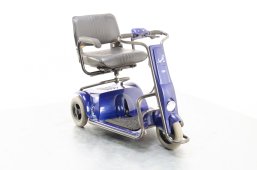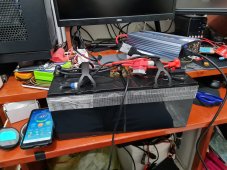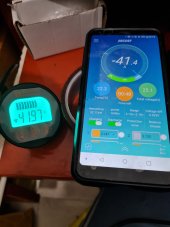I wanted to post a show and tell thread for a while... Maybe I will do that soon, and you will get all the info.
I'll keep you updated.
But for now:
The main reason for doing DIY and not just buying drop in Lifepo4 replacements for the AGMs, was size constraints.
I wasn't able to find a 24v Lifepo4 battery that would fit the battery compartment.
Maybe I could have gone with two 12v Lifepo4 in series, but I was worried about the batteries keeping balance during charging/discharging.
Also, I wanted to be able to monitor the battery closely. Relying on the battery meter he has on the scooter is not relevant for Lifepo4 batteries, because of their flat voltage curve. That's why I added a shunt with display, and installed it on the handle bars of the scooter.
The JBD BMS with the Bluetooth app is great, but takes a while to learn and tweak.
In short, if you plan to go DIY, you have to know what your doing.
This was my first DIY Lifepo4 build, but I did it after a few months of studying, reading, getting advice on this forum, and endless hours of YouTube videos.
I also was able to get the electrical schematics for the scooter and the manual for the motor controller, (Curtis 1210) which was very helpful in planning the build, installing and making sure everything is within spec and safe.
For now my dad is really happy with the Lifepo4 (installed it about two weeks ago). It made the scooter alot more peppy, and gives longer range: You can only discharge AGM/GEL/SLA batteries to 50% of their rated capacity, without damaging them. Even then, you only get a few hundred cycles (charge/discharge) out of them. With Lifepo4, you get a few thousand cycles with 80%-90% depth of discharge.
So if before my dad had around 16Ah net capacity (half of 33Ah), now he has 35Ah net capacity (out if 40Ah cells, which I limited to 35Ah using the BMS parameters and Lifepo4 charger voltage).
The scooter is a TGA Superlight SL3, with a 250w (nominal), 25A (max/peak) 24v motor (rear wheel drive).

It's fairly old (they don'tmake them anymore), but it's compact and my dad loves it.









